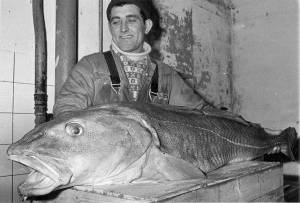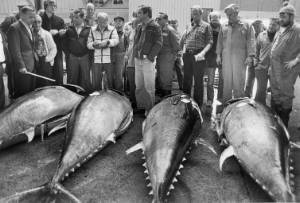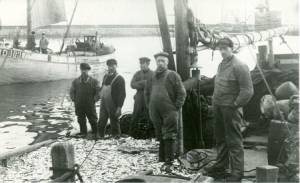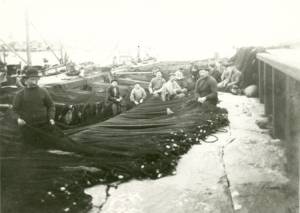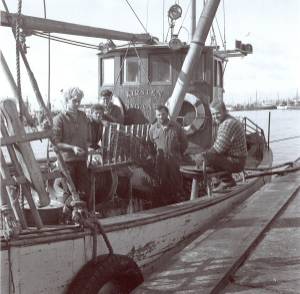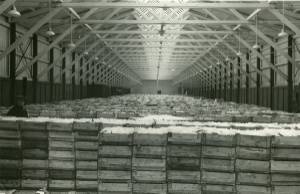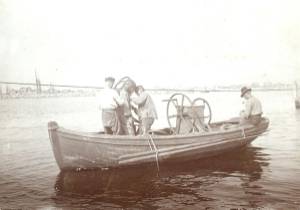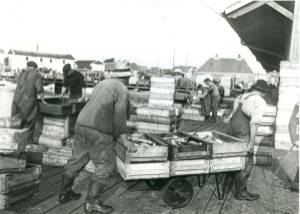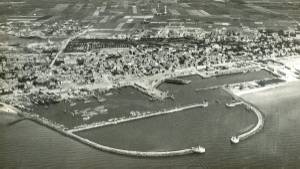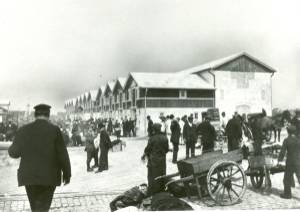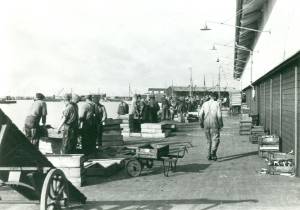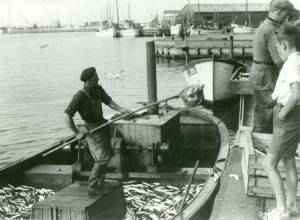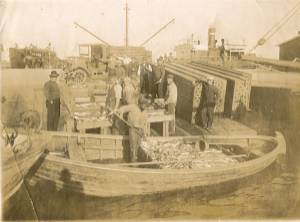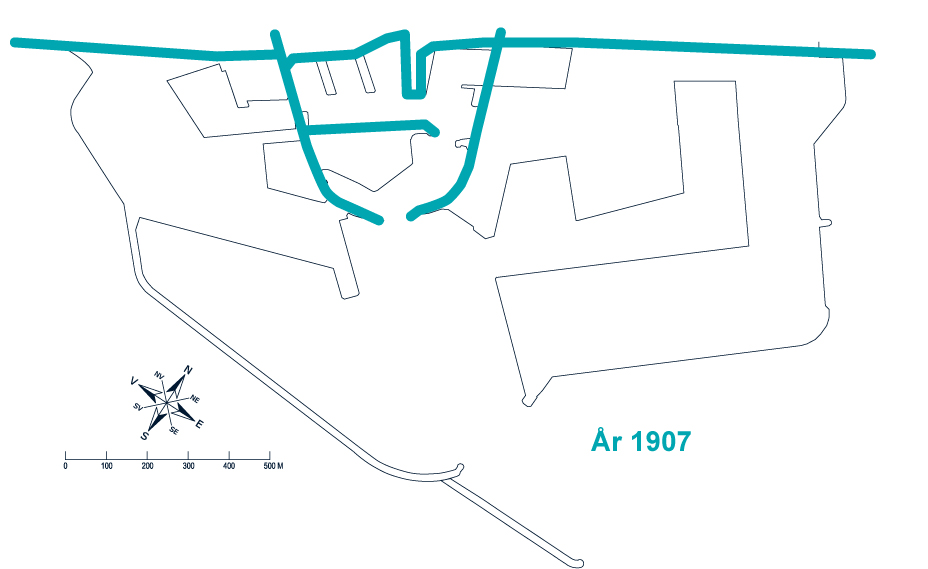
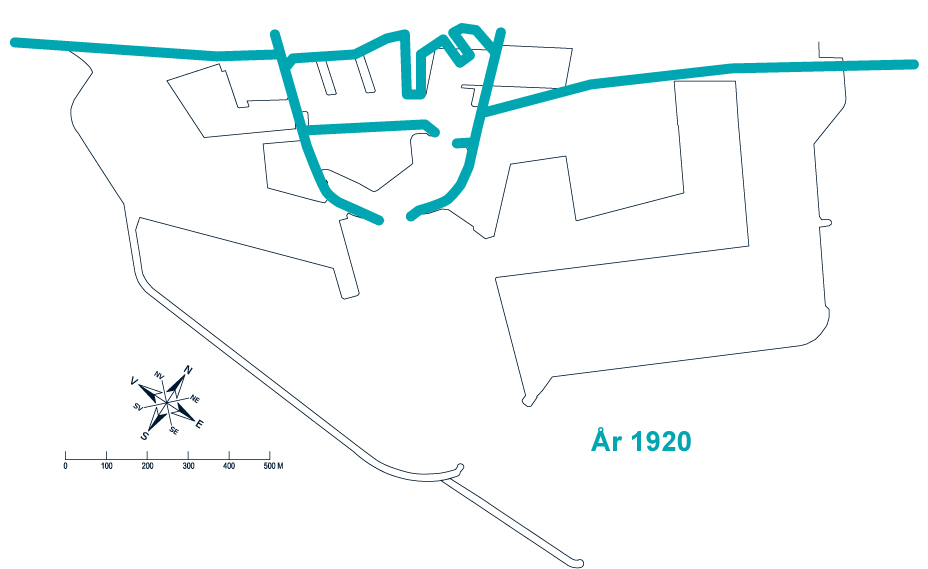
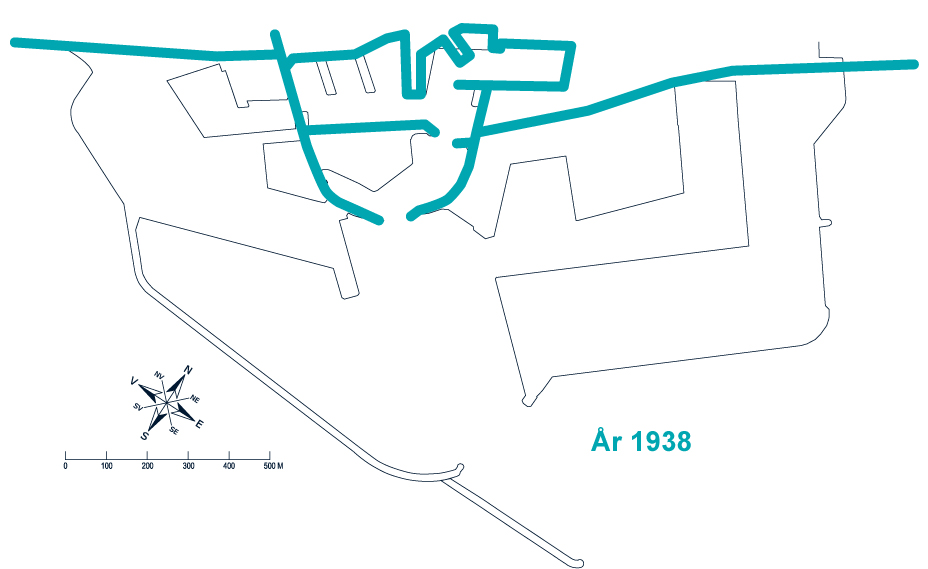
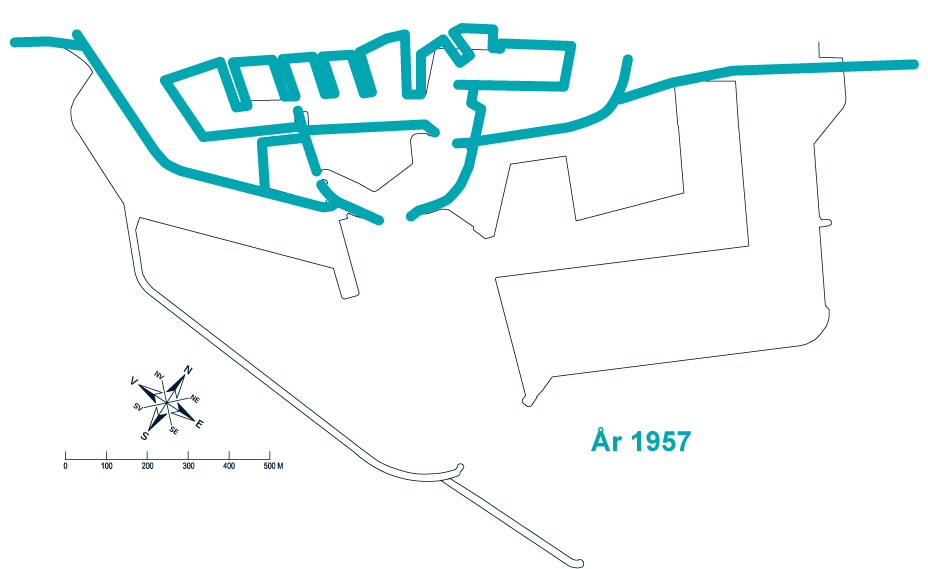
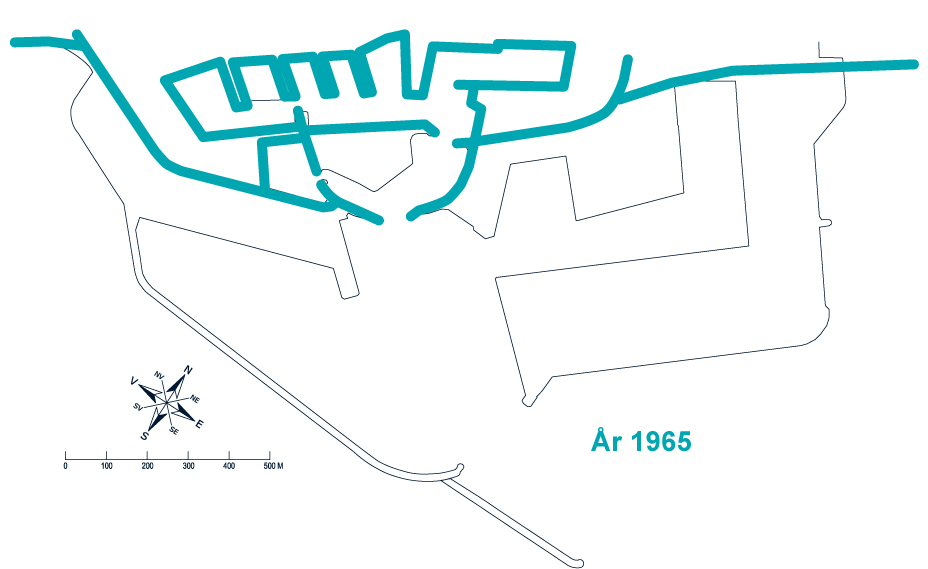
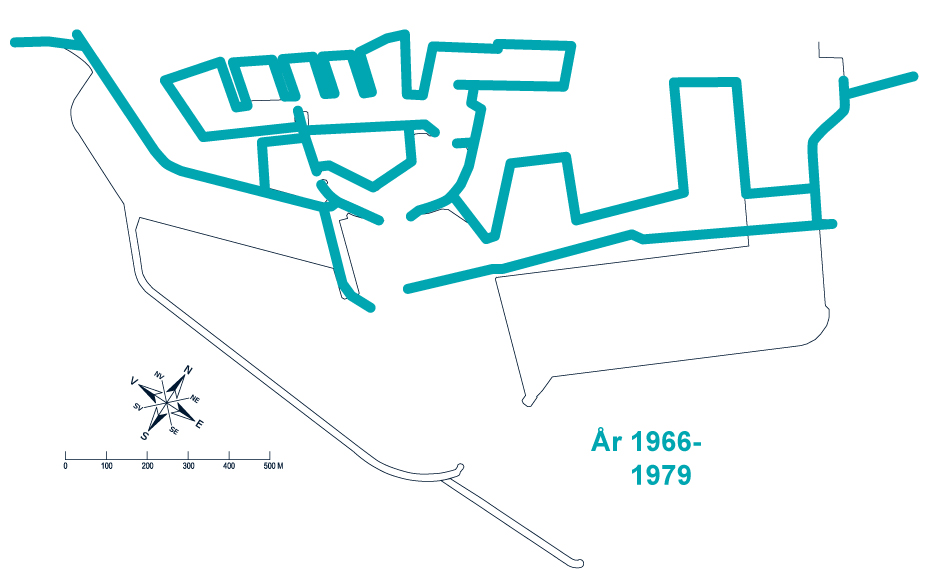
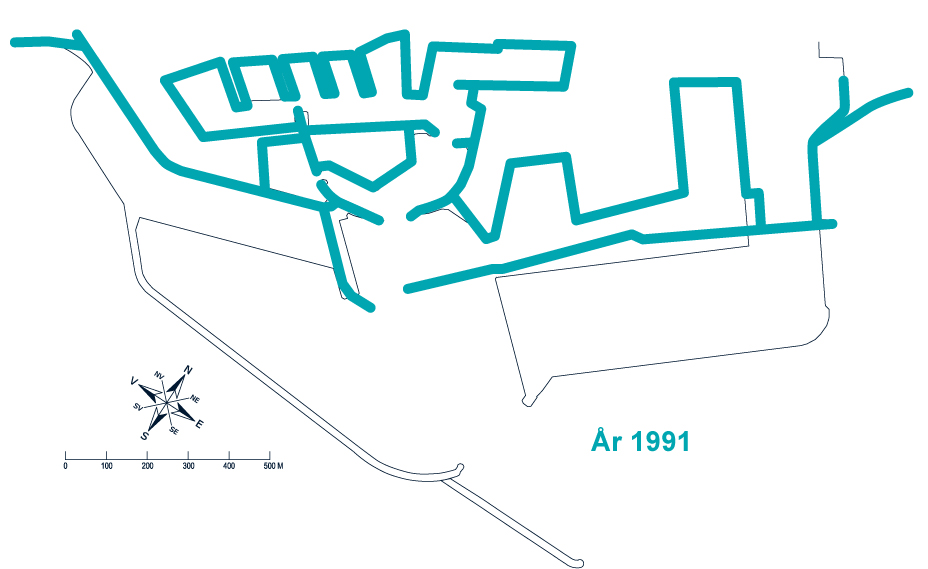

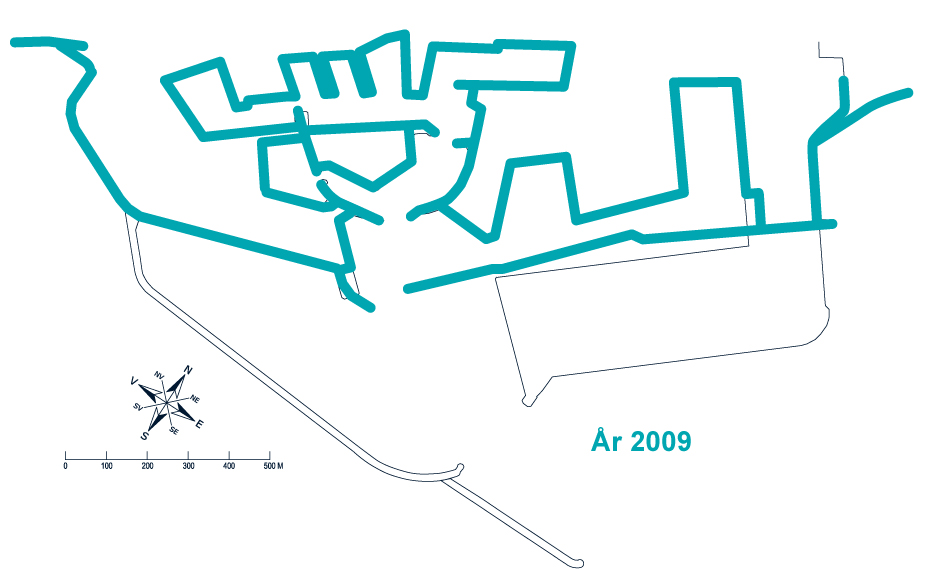
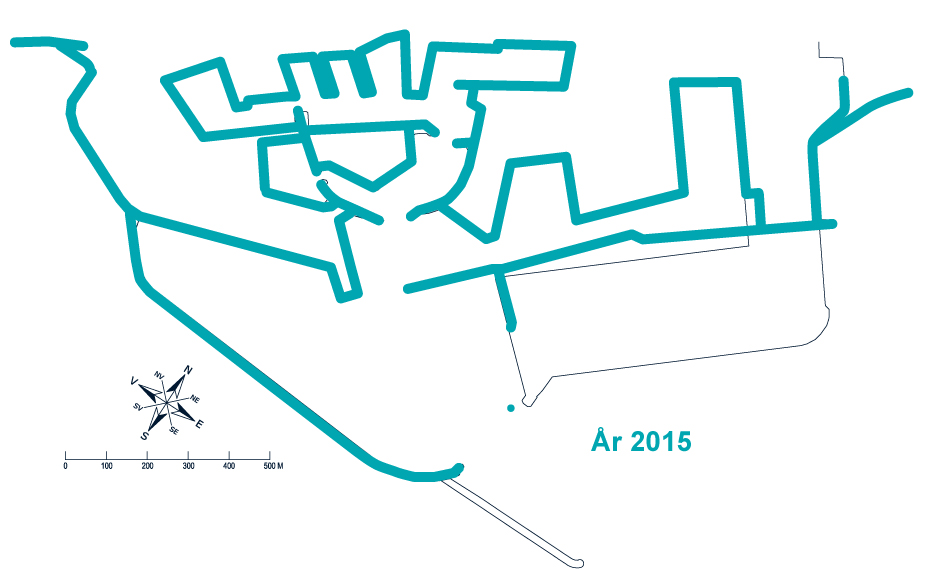
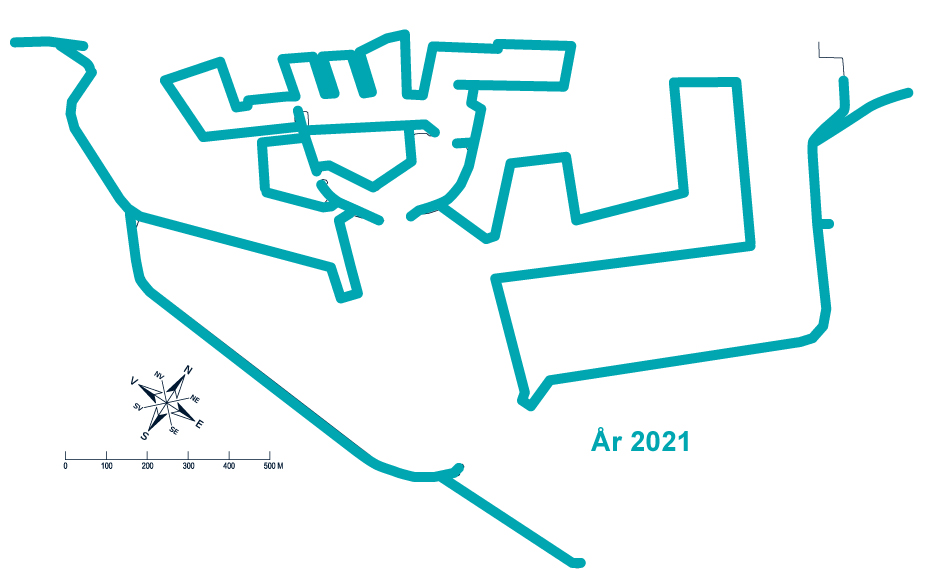
The History of the Harbour
1903 The bill concerning the construction of Port of Skagen was passed
For generations, the politicians, water-engineering experts and fishermen had been debating where to take action with respect to the construction of new harbours in Jutland. A commission that had been working during most of the 1880s had, among other things, given birth to the idea of a double harbour near Skagen along the lines of the design prepared by Holm, the Chief Inspector of Customs. He envisioned the harbour as one large basin laid out in the terrain between Det Hvide Fyr (the White Lighthouse) and Det Grå Fyr (the Grey Lighthouse), thus linked to both the Kattegat and the Skagerrak by way of channels.
In the meantime, the Skaw fishermen had increased their pressure on the minister of the interior; and this resulted in a new harbour project, prepared by Engineer Berg.
Later, there were fantasies involving an island harbour by Skagen and several similarly wild constructions. In the end, however, it was Berg's project from 1888 that, in principle, came to constitute the background for the Rigsdag's (the Parliament's) passing of the bill on April 23 1903.
1904 The construction of the harbour took its beginning
On January 26 1904, the invitation to tender for the construction of the harbour was sent out.
The tenders that had been submitted for the construction of a fishing harbour by Skagen were opened at the office of the water-engineering administration. The lowest bid, submitted by Gunnarson & Søn and Elzelingen, was for 1,430,283 kr. and 3 øre, and thus they won the tender. In February of 1904, the first small steps were taken on the harbour construction.
The site selected for the location of the harbour was at Sønderstrand (the Southern Beach) just outside the town. At a distance of a little less than 500 metres, two piers extended from the coast across the sand bars. The outer piers curved towards each other, creating a 60-metre broad harbour entrance enclosing a water area of a little below 160,000 m2. This basin was split up by two transverse piers – a western of well over 300 m in length and a shorter, easterly, one of 45 m. There was an entrance of 40 m in width between the outer and inner harbour areas. The water depth was 3-4 m. Along with the construction of the harbour itself, work was also going on at the construction of the harbourmaster residence, the fish warehouses and the Danish architect Hack Kampmann's custom house.
1907 The harbour was opened by King Frederik VIII
When on November 19 1907, the gunboat "Krieger", on a signal from King Frederik the 8th, could snap the string between the pier heads and thus officially inaugurate the harbour, the harbour had already been taken into use. On this date, however, the town was bristling with flags; and also the much renowned Skagen artists contributed to the festivities. On the harbour, Carl Locher, the marine painter, had erected an impressive triumphal arch decorated with herring warp and bobbers.
1908 The first four fish warehouses were ready for use
The initial drawings for the warehouses had been prepared by the Danish architect, Thorvald Bindesbøll.
The harbour's first 4 warehouses – viz. the ones standing on Fiskehuskajen – were ready for use in the month of May in 1908. The Danish state was the builder of the first warehouses; and the rent was fixed at 300 kr. annually.
1932 The harbour celebrated its 25th anniversary
The harbour's 25th anniversary, on November 19 1932, was celebrated with simplicity and dignity. The children were given a day off from school; and the final auction was held at 10 a.m. to give everyone an opportunity to participate in the festivities.
Chief Municipal Veterinary Officer Hansen headed the town brass band; and both Prime Minister Stauning and Friis Skotte, the Minister for Transport, gave speeches in front of the harbour-master residence.
The chief attraction of the day was the unveiling of Anne Marie Carl Nielsen's statue dubbed Fiskeren og Redningsmanden (the Fisherman and his Rescuer). Right from the beginning the town's inhabitants had given their full support to this project, but suddenly sentiments changed. It was discovered that the model for the statue, C.C. Harboe, was a Hanstholm fisherman. He was a brave man who, by the way, had lost his life to the sea long before this. Some considered it a disgrace that this statue had originally been sculpted with an entirely different objective in mind – namely, as a subordinate figure to the equestrian statue in front of the Danish government building, Christiansborg. In the end, sentiments ran so high that the erection had to be carried out under police protection. In time, though, the Skaws became reconciled with the forceful figure.
1935-1938 The harbour expanded to the east
From 1930 and onwards, winter fishing was gradually restructured. The large cutters fishing the Dogger Bank during the summer had taken to trawling for herring. This kind of fishing had proved to be particularly profitable; and it was expected to entail a major increase in fishing – to such an extent that an expansion of the harbour towards the east would be required.
In February 1935, Friis Skotte, Minister for Transport, announced that the amount of 900,000 kr. had been set aside for the expansion of Port of Skagen towards the east. The project involved a 100-by-200-metre basin with a depth of 4.5 metres which was particularly designed for fishermen needing a location for unloading their takings.
1938 New auction room
In 1938, the auction room had been completed. It had been built by Contractor Bodilsen, and it was 100 m in length and 12 m wide. It was equipped with skylights and seven phone booths.
The majority of the fishermen's tool houses were placed to the east of the new harbour expansion. The cardboard-box factory remained at its location close to the docks; and much needed crew quarters were erected for the dock workers.
1951-1957 The harbour expanded to the west
The east basin had barely been inaugurated in 1937, before an expansion toward the west was on the agenda.
In 1943, the Danish Parliament, the Rigsdag, passed a resolution setting aside 7 million kr. for this project. However, the German occupation of the county interfered with the realisation. In the post-war era, new diplomatic juggling were required for the purpose of succeeding in pursuading S.P. Larsen, Minister for Transport, to visit Skagen, in order that he could acquire a personal insight into the hopelessly cramped conditions at Port of Skagen. The concession was granted the following year; and in 1952 the construction could begin. It had been budgeted at 11 million kr.
With the western expansion the harbour capacity had almost been doubled.
When the construction had been completed, Port of Skagen represented the most state-of-the art fishing harbour ever. The on-shore area had been expanded by 90,000 m2 and the off-shore area by 70,000 m2. Also, 12 metres of quay and a new basin for the seiners had been established.
1964-1979 The second expansion to the east
During the 1960s, the fishing industry culminated – in particular with respect to the number of fishing vessels. By then, more than 400 cutters were registered in Skagen; and a new auction room was built between the auction office and the building of the fisheries inspection.
In 1964, the next expansion of Port of Skagen towards the east took its beginning. An amount of 35 million kr. had been set aside for the project that – boasting a 2.5 km quay – would increase the off-shore area with 14 ha and the on-shore area with 120 ha.
The most recent harbour expansion to date – again towards the east – was completed in 1979.
1985 Deepening towards the Auktionsbassin (the Auction Basin)
The deepening was carried out from the entrance of Ydre Forhavnsbassin (the Outer Front-Harbour Basin) and all the way along Gl. Pier (the Old Pier) and auction room 1 of Auktionsbassinet. The entire stretch was deepened to a depth of 7 metres.
1991 Deepening of Vesthavnen (the West Harbour)
Vestre Bassin (the West Basin) and Mellembassinet (the Central Basin) were each deepened to a depth of 6 metres.
1993 Deepening of Vesthavnen (the West Harbour) and Østbassin (the East Basin)
Mellembassinet (the Central Basin) of Vesthavnen (the West Harbour) was deepened to a depth of 7 metres and a part of Østbassin (the East Basin) by Fragtkajen (the Freight Quay) was deepened to a depth of 8.5 metres.
2001 Port of Skagen became a municipal autonomously governed harbour
The Danish state sold off some of the national harbours round the country; and, in 2001, Port of Skagen was sold to the Municipality of Skagen.
2005 Deepening of Østbassin 2 (East Basin 2)
Port of Skagen built a 300-metre new quay to a water depth of 9 metres in the outer part of Østbassin 2.
This project totalled DKK 12.5m kr.
2006 The harbour builds a new trawl-stretching area
For a long time, there had been a demand from seine makers and fishermen for accommodations where they could work on their trawls. In 2006, Port of Skagen constructed a completely new trawl-stretching area by way of backfilling and could thus offer seine makers and fishermen optimal facilities.
This embankment is 138 metres in length and covers an area of 4,000 m2.
2007 Deeping of Østbassin 1 (East Basin 1) to a depth of 8 metres
Skagen Pelagic A/S erected a totally new factory at Tobiskajen with the feasibility of direct pumping in of fish; and, concurrent with the building of fishing vessels with increased draughts, Port of Skagen had to initiate work on further deepening together with a new quay with a capacity for such a depth.
The project work took its beginning in January 2007 and comprised 300 metres of new quays and a water depth of 8 metres. The project was completed in August 2007.
This project totalled DKK 16.4m.
2007 Karstensens Skibsværft built a new dry dock
In February 2006, Karstensens Skibsværft initiated the work on a new dry dock with a capacity for taking in vessels of up to 8,000 tons which, when completed, measured 135 metres in length and 25 metres in width. The base plate was located in a depth between 6.5 and 8.5 metres below water level. The dry dock was placed between Pier 3 and Pier 4; and Port of Skagen would be responsible for building the new 135-metre-long quay with a water depth of 8 metres. The entire project was completed in 2007.
This project totalled DKK 13m.
2006-2007 Once again, the harbour was expanded to the west – with an off-shore area of 110,000 m2
In the autumn of 2006 the most recent expansion of Port of Skagen was initiated. The main contractors were Per Aarsleff A/S and VG Entreprenør A/S, who were responsible for the comprehensive work comprising stonework and the construction of a breakwater, together with Rohde Nielsen A/S who had been awarded the contract for dredging the sand for the 110,000 m2 off-shore area. In total, 800,000 m3 of sand had to be dredged from Skagens Rev a little more than 3 nautical miles from the harbour.
This project totalled DKK 70m.
Start-up in November 2006. The dredging of sand and the stonework had been completed by July 2007.
The first part of the site development had been completed by December 2007.
2007 The harbour celebrated its centenary
Just like his great-great-grandfather King Frederik VIII before him, Crown Prince Frederik opened the festivities in connection with the harbour's 100-year anniversary which took place on July 11 2007. The event was opened on the stairs leading to the harbour-master residence – the exact same spot where the festivities had taken their beginning a hundred years earlier. In this connection a copy of Carl Locher's arch had been made, and this was erected at the entrance to the newly renovated Havneplads (the Harbour Square). The celebration, stretching from June and well into September, comprised various events such as a centennial exhibition – Port of Skagen during 100 years in film and pictures; the inauguration of Pelagic Skagen A/S; Dexia FARR 40 Skagen Race; the official inauguration of the new harbour expansion; the presentation of Port of Skagen's centennial anniversary book; and a lot more.
Concluding the anniversary, the harbour held a large party for all the industries and businesses connected with the harbour, and the entire town could help themselves from a table of various herring dishes.
2008 The establishment of a fish terminal
In 2006, the harbour asked the consultancy firm Rambøll to carry out an analysis with respect to "an optimisation of auction room 2". This came to be the starting signal for the new fish terminal. The construction work began in September 2007. The old auction room was completely renovated – inside as outside. A completely new refrigeration plant was installed, 2 new airlocks equipped with quick-acting doors were installed to secure stable low temperatures – a so-called unbroken refrigeration chain.
By April 2008, the new fish terminal was ready for use.
The project was subsidised by the EU under the FIUF programme.
2009 New quay in Ydre Forhavnsbassin (the Outer Front-Harbour Basin)
The work was commenced in May 2008 with C.G. Jensen as the main contractor.
The objective of the project was to build a new quay that was to be 170 metres in length and having a water depth of 9 metres and a 20-metre-wide RO-RO ramp for motorised haulage. The quay, built with a 5000 m2 on-shore quay area for temporary storage of cargo etc., is directly connected with 90,000 m2 of industrial areas.
2010 Østbassin 1 (East Basin 1) was expanded to a depth of 9 metres
The fishing vessels are becoming increasingly larger with capacities for cargoes of huge amounts of fish; and, when fully loaded, the largest ships will have a draught equivalent to 8.5 metres. Thus the harbour will, once more, have to expand the depth in Østbassin 1 – this time to a depth of 9 metres. The work on this expansion was commenced in May 2010.
